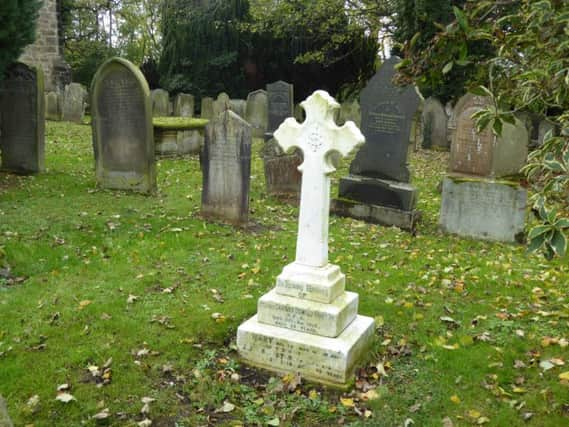Tragic Hartlepool couple survived the First World War - and died of flu days later


Sadly, it happened to Mary Farrow – the Hartlepool woman whose story we first began telling last week.
She and her beloved husband, 2nd Lt Charles Farrow of the Royal Field Artillery, had to live through the brutal ordeals of the First World War in their own separate ways.
Mary was in Hartlepool when the Bombardment struck.
Advertisement
Hide AdAdvertisement
Hide AdHundreds of miles away, Charles lived through the horrors of the battlefield.
And yet – after they both lived through the whole of the war – they were both dead within a month of it ending.
Researcher Gillian Hunt explained more.
Like so many families, Charles and Mary must have had mixed feelings on Armistice Day.
Relief, that Mary would not have to face the dreaded knock on the door bringing bad news that something terrible had happened to Charles.
Advertisement
Hide AdAdvertisement
Hide AdBut sadness for all those they had lost, including Charles’ brother Joseph and so many of his former rugby team-mates.
Joseph had died of his wounds in a military hospital in France on April 2, 1918, leaving a widow and four very young children in Hartlepool.
Charles was granted leave in the UK for a fortnight from November 14, 1918.
But tragedy was about to strike –- and it had nothing to do with the war.
Advertisement
Hide AdAdvertisement
Hide AdMary died of pneumonia following influenza. It took her life on November 25, 1918, when she was only 25-years-old.
She was buried at St Mary’s Church in Gainford by the Rev Henry C Watson three days later.
Grieving husband Charles lasted only seven days more.
Gillian told us: “Charles died on December 2, 1918, aged 28-years-old of the same cause and Rev Watson laid him to rest alongside his wife on December 4, 1918.”
Two people both in their 20s were dead – days after the relief of surviving the most brutal war in history.
Advertisement
Hide AdAdvertisement
Hide AdGillian added: “The Spanish flu epidemic of 1918 resulted in more deaths than the First World War itself, the majority of victims being young adults, like Charles and Mary.”
“It is nice to think their last few days were happy in the peace of Teesdale after the years of war and they were planning a future together. They rest together in a country churchyard whose parishioners care about them enough to have restored their headstone.”
Our thanks go to Gillian for another incredible story of love and tragedy.
Next week – Charles Farrow; the orphan who became a sporting star before war took many of his team-mates.